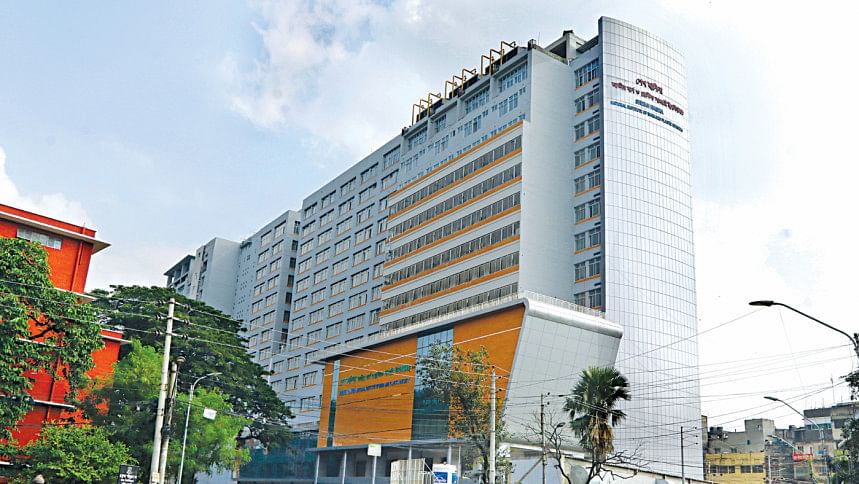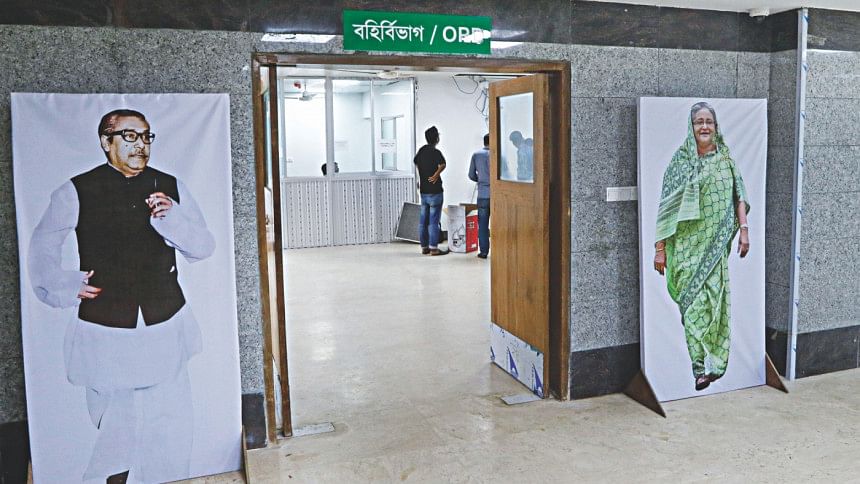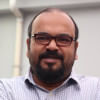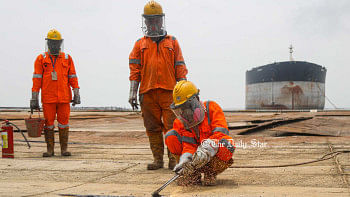A Stark Contrast: Well-equipped, yet not fully functional in a year

With its clean and calm ambience, the institute looks like a privately-run one, well-equipped to provide treatment to patients.
This public institute -- Sheikh Hasina National Institute of Burn and Plastic Surgery -- was inaugurated on October 25 last year by the prime minister.
Although more than a year has gone by, the 15-storey 500-bed institute on Dr Mohammad Shahidullah Sarak in Chankharpool is yet to be fully functional, due to sloth in recruitment and a resultant manpower crisis.
Meanwhile right across the street, doctors, nurses and staff are struggling to cope with the rush of patients as the 100-bed burn unit at Dhaka Medical College Hospital remains severely overcrowded.

The national burn institute, which brought hope for improvement of a situation so dire, was expected to be operational within six months.
An estimated 2,200 staffers, including doctors, nurses, technicians, ward and administration staff members, had been allocated to the institute.
“Right now, we have over a hundred doctors, 70-odd nurses and some technicians on deputation, as per the ongoing first phase of the government allocation. We are yet to get other staff members, which will be assigned to us in a total of three phases,” Dr Samanta Lal Sen, national coordinator of the burn institute, told The Daily Star yesterday.
During a recent visit, the institute looked almost deserted with only a handful of patients at the outdoor unit. There was no one at the reception, while many pieces of equipment were seen still in their packaging.
Dr Partha Sankar Paul, resident surgeon (outdoor) of the institute, said they have started treating patients regularly since September 15 this year.
“Once we start the emergency service, we’ll be able to treat and admit more patients,” said Dr Paul, who used to be the resident surgeon at DMCH burn unit (outdoor).
“We have some 200 patients admitted currently,” Dr Sen told this newspaper yesterday, adding that some 40 to 50 patients are taking treatment there every day.
“With the manpower we have, it’s difficult to start the emergency service. But we are pushing to get it started by December,” he told this newspaper.
Once fully functional, this institute will help treat burn patients and train plastic surgeons to meet the country’s requirements, said the eminent surgeon.
This institute will ease the pressure on DMCH when the two will start operating simultaneously, he said. The burn specialist also said for the last couple of months, they had been treating dengue patients to help DMCH out.
Contacted, Dr Md Belal Hossain, director (admin) of the Directorate General of Health Services of the health ministry, yesterday told this newspaper that the recruitment process of a few hundred third- and fourth-class employees has already been started, and more recruitment will be done eventually.
THE INSTITUTE AT A GLANCE
With state-of-the-art equipment and technology, the national burn institute, located next to
Mayor Hanif Flyover, has 50 intensive care units and 10 operation theatres, making it the largest burn and plastic surgery institute in the world, said Dr Sen.
“But we don’t want to be a hospital that is just large in size; we want to be a hospital that cares for its patients,” he said.
The building and equipment cost around Tk 912 crore, according to documents. The institute has three blocks -- burn unit, plastic surgery unit and academic wing. But it will not bring any significant change for burn patients unless they get skilled manpower, stressed Dr Paul.
Dr Sen mentioned that burn-related treatment is expensive as it needs modern equipment for surgeries, preventing infections, tests and keeping patients stable. “But the prime minister has insisted that burn patients get quality treatment at an affordable cost so that people don’t have to go abroad.”
He said infection is the cause of death for many burn patients. Unrestricted movement of visitors inside hospital is one of the reasons. “That’s why we’ve restricted such movement at the institute. Attendees have a separate place to stay. If needed, they can visit the patient,” he added.
Dr Sen said they have signed an agreement with Singapore General Hospital last year. “As per that, we have started sending doctors, nurses and technicians there for training so that they can serve patients better. Besides, medical teams from Singapore are also visiting our institute for manpower development.”
Apart from the vast infrastructure of 6.5 lakh square feet and modern equipment, the institute will provide services that have not even been thought of until now, like supplying skin from a skin bank, which, Dr Sen said, will solve the present problem of shortage of skin when skin grafts are required. It will also have 10 modular operating theatres to contain infections.
“We will be able to reattach severed limbs if a patient is rushed to the institute within six hours after an incident,” he said, adding that they have a helipad to fly in emergency patients.
“Burn treatment has to be done within 24 hours to treat the patient properly. That’s why we need burn units in all districts,” the national coordinator stressed.


 For all latest news, follow The Daily Star's Google News channel.
For all latest news, follow The Daily Star's Google News channel. 



Comments